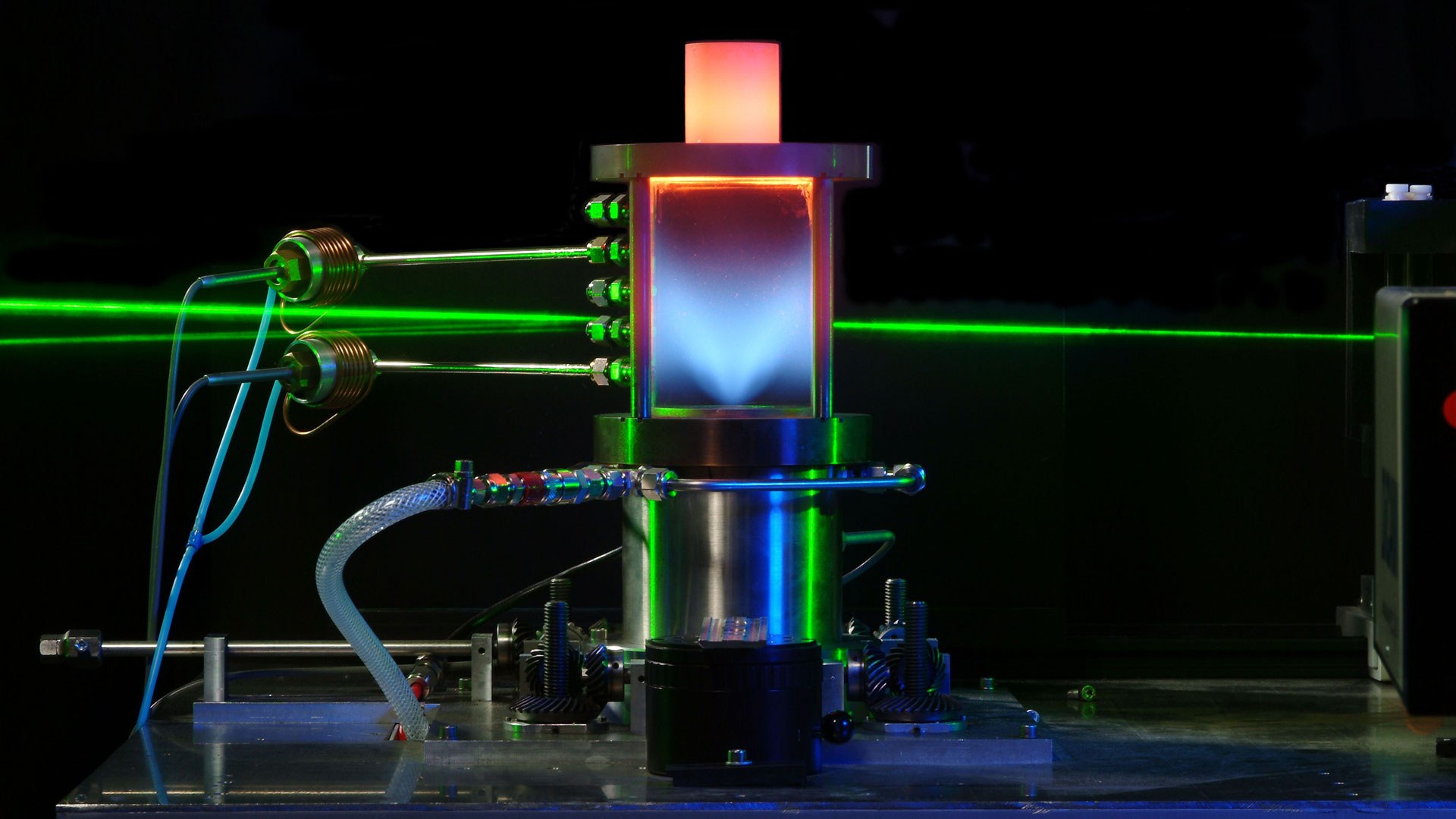Creation of validation data records

The modelling of technical combustion processes, e.g. in stationary or aircraft gas turbine combustion chambers, is made possible by linking various sub-models within a "Computational Fluid Dynamics" simulation.
This enables an analysis of issues such as the possible use of new types of combustibles, fuels and propellants in planned or existing combustion chamber geometries and to simulate their effects on flame stability, emissions (particles, nitrogen oxides, etc.), thermoacoustics and wall heat loads, for example. For example, CFD simulations of reactive flows require a validated and adapted chemical-kinetic reaction mechanism or temporally and spatially resolved validation data of the flow field, the flame fronts or the temperature, species or particle distributions. They help to check the quality of the sub-models or the result of their interaction within the CFD simulation. These validation data sets are developed at the institute in the following areas:
Chemical-kinetic characterisation including validation data
Chemical reactions of high-temperature processes such as combustion processes or self-ignition processes are mapped using chemical-kinetic reaction models. Predicting the formation and decomposition of combustion intermediates, the ignition delay time or the flame propagation speed places the highest demands on the quality of a chemical-kinetic reaction model. At the same time, the precise description of the reaction process during the combustion of a specific fuel is a basic prerequisite for understanding and minimising the formation of pollutants in technical combustion systems such as gas turbines or piston engines. The modelling of chemically highly complex technical fuels, which are usually composed of several hundred individual substances, further increases the demands on the performance of a reaction model. To test and validate reaction and process models, customer-specific experimental validation data can be measured in the form of concentration curves of combustion intermediates, particle evolution, ignition delay times and laminar flame speeds during the oxidation of specific combustibles, fuels and propellants in technically relevant pressure and temperature ranges. The exploration of special reaction conditions is just as possible as the investigation of new types of fuels. More information on this can be found under Reaction Kinetics Experiments.
Optical and laser-based data from complex combustion experiments for the validation of combustion simulation tools (BSD)
Technical combustion processes often take place at elevated pressure and in turbulent flow. The use of combustion simulation supports the development of new generations of stationary and aircraft gas turbines. However, due to the complex combination of flow phenomena, combustion chemistry and technical geometry, current combustion modelling is only possible with certain simplifications. The validation of such models has traditionally been based on only limited information, such as exhaust emissions at the outlet of the combustion chamber. Using optical and laser-based methods, we create comprehensive data sets on the distribution of fuel, other combustion species, temperatures, pollutants, flame fronts and flow fields, which we make available to our neighbouring departments and other interested research institutions. Last but not least, temperatures can be determined on the inside of the wall. In contrast to industrial applications, combustion chambers with optical access are usually used to create the data sets. In contrast to industrial combustion, the boundary conditions are very well known. The advantages of using optical and laser-based diagnostics are
- High spatial and temporal resolution (mean values, statistics)
- Non-contact application without influencing the analysed process
- Selective excitation by choosing suitable laser or detection wavelengths
- Simultaneous application of several measurement techniques
Available data sets exist, among others, for
- flat premixed laminar CH4/air flames
- turbulent CH4/H2/N2 jet flames
- turbulent H2/N2 jet flames
- various methane swirl flames (available on request)
- Hydrogen-enriched methane flames (available on request)
- Sooty ethylene flames (available on request)
